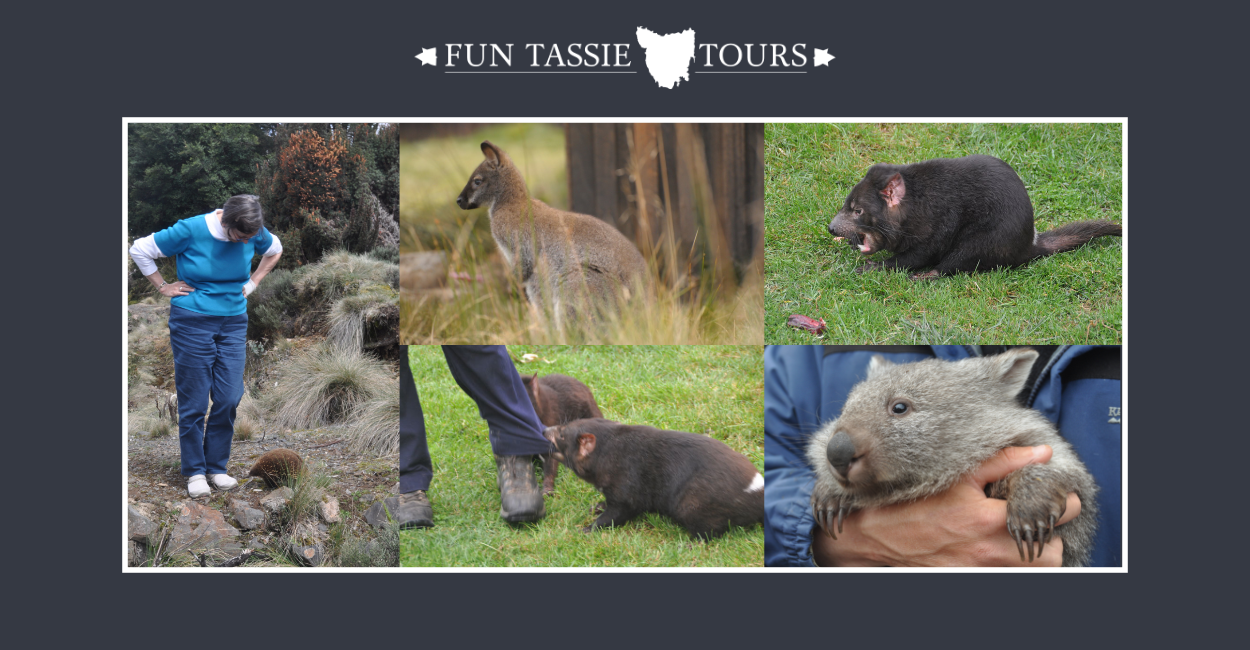Offer
Provide additional details about the offer you're running.

One of the highlights of my day 3 Fun Tassie tour is the devil feeding at Natureworld, the fantastic Tasmanian Native Animal Sanctuary in Bicheno on Tasmania’s east coast. These great little animals can be seen up close whilst feeding. They are part of the breeding program to help save the devils from possible extinction, due to the devil facial tumour disease, a terrible, transmittable type of cancer that has killed over 80% of Tasmanian devils.
The Tasmanian Devil is a small dog like animal with a large head, stout body and thick tail, standing about 25cm high and weighing up to 8kg for females and 11kg for males. Their thick course black fur has distinctive irregular white markings which vary from animal to animal (no two devils are the same) most markings are on the neck, shoulders and rump.
They are marsupials, which means that the female has a pouch in which she raises up to four young. She actually gives birth to around 30 to 40 live babies each the size of a grain of rice. It is then a race of the first and fittest to gain entry to her pouch and attach themselves to one of her four teats, all the others do not survive. The minute hairless babies remain in the pouch, attached to the teat feeding for about four months they then start to venture out and by six months they stay out of the pouch but remain most of the time in their burrow where the mother continues to suckle them but also begins to introduce them to meat, to supplement their diet and also help them teeth. After 12 months the mother walks out and leaves them to fend for themselves, it is estimated that only one in four ill survive to adulthood.
Devils will eat anything, dead or alive, although they prefer carrion and are seen as the bush undertakers. Feeding on a carcass they eat everything, fur, bones, innards even feathers. Their massive jaws have no trouble crunching though bone and cartlidge, in fact their biting power is up to seven times stronger than a small dog and similar to that of the spotted hyena.
The devils hearing is extremely good but their eye sight is very poor and mainly evolved to detect movement. Their sense of smell is acute allowing them to detect an animal carcass from up to 7kms away. They are loners and do not form packs, although many may feed on the same carcass and eat up to 30% of their own body weight. Although mostly nocturnal, they prefer to hunt and eat at night but also love to quietly sunbake at times during the day.
All my passengers on this Fun Tassie Tour agree that the informative visit to Natureworld to see devils along with other Tasmanian native animals, like kangaroos, wallabies, wombats etc is a great Fun Tassie experience.